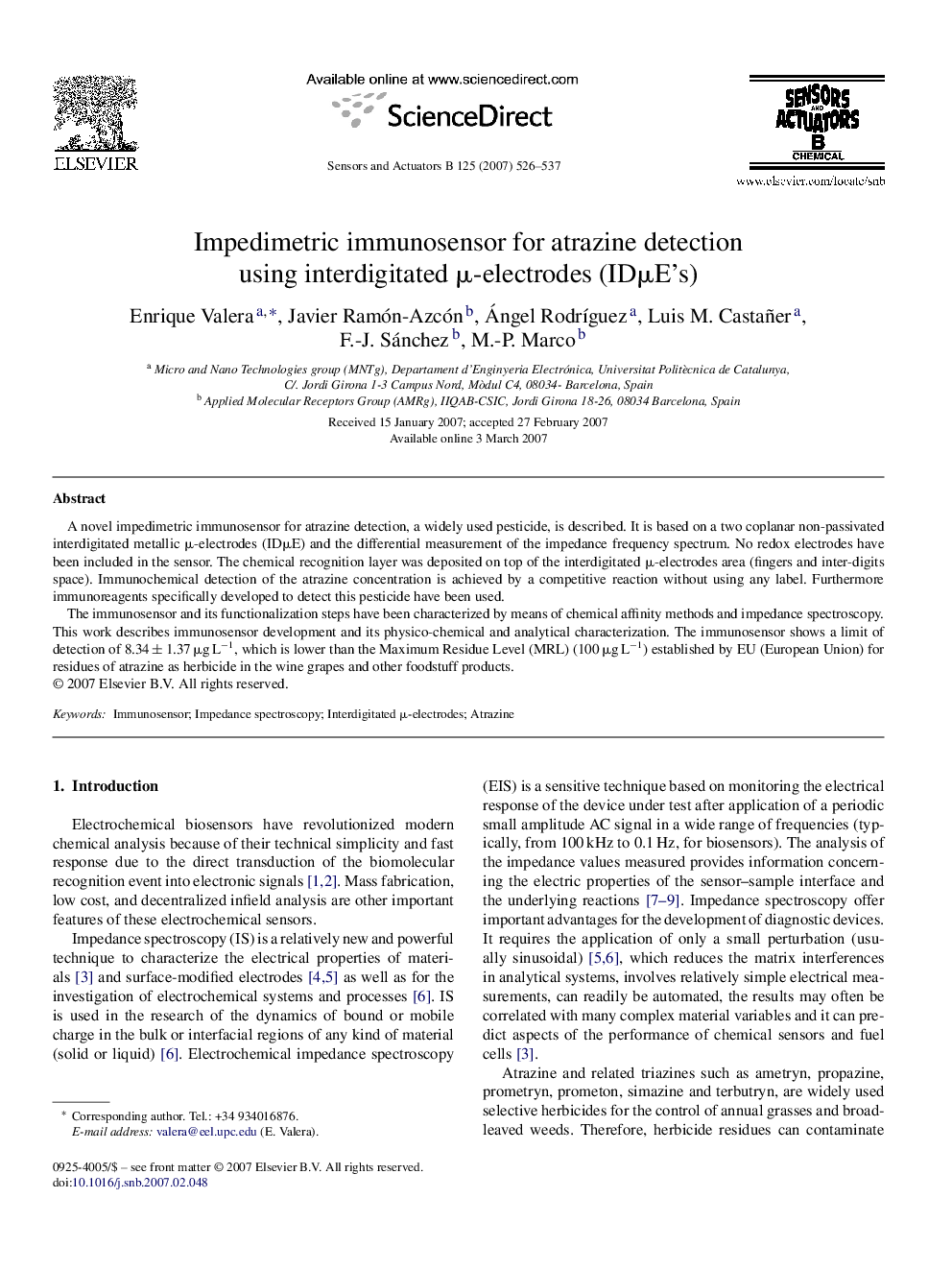| Article ID | Journal | Published Year | Pages | File Type |
|---|---|---|---|---|
| 746837 | Sensors and Actuators B: Chemical | 2007 | 12 Pages |
A novel impedimetric immunosensor for atrazine detection, a widely used pesticide, is described. It is based on a two coplanar non-passivated interdigitated metallic μ-electrodes (IDμE) and the differential measurement of the impedance frequency spectrum. No redox electrodes have been included in the sensor. The chemical recognition layer was deposited on top of the interdigitated μ-electrodes area (fingers and inter-digits space). Immunochemical detection of the atrazine concentration is achieved by a competitive reaction without using any label. Furthermore immunoreagents specifically developed to detect this pesticide have been used.The immunosensor and its functionalization steps have been characterized by means of chemical affinity methods and impedance spectroscopy. This work describes immunosensor development and its physico-chemical and analytical characterization. The immunosensor shows a limit of detection of 8.34 ± 1.37 μg L−1, which is lower than the Maximum Residue Level (MRL) (100 μg L−1) established by EU (European Union) for residues of atrazine as herbicide in the wine grapes and other foodstuff products.
